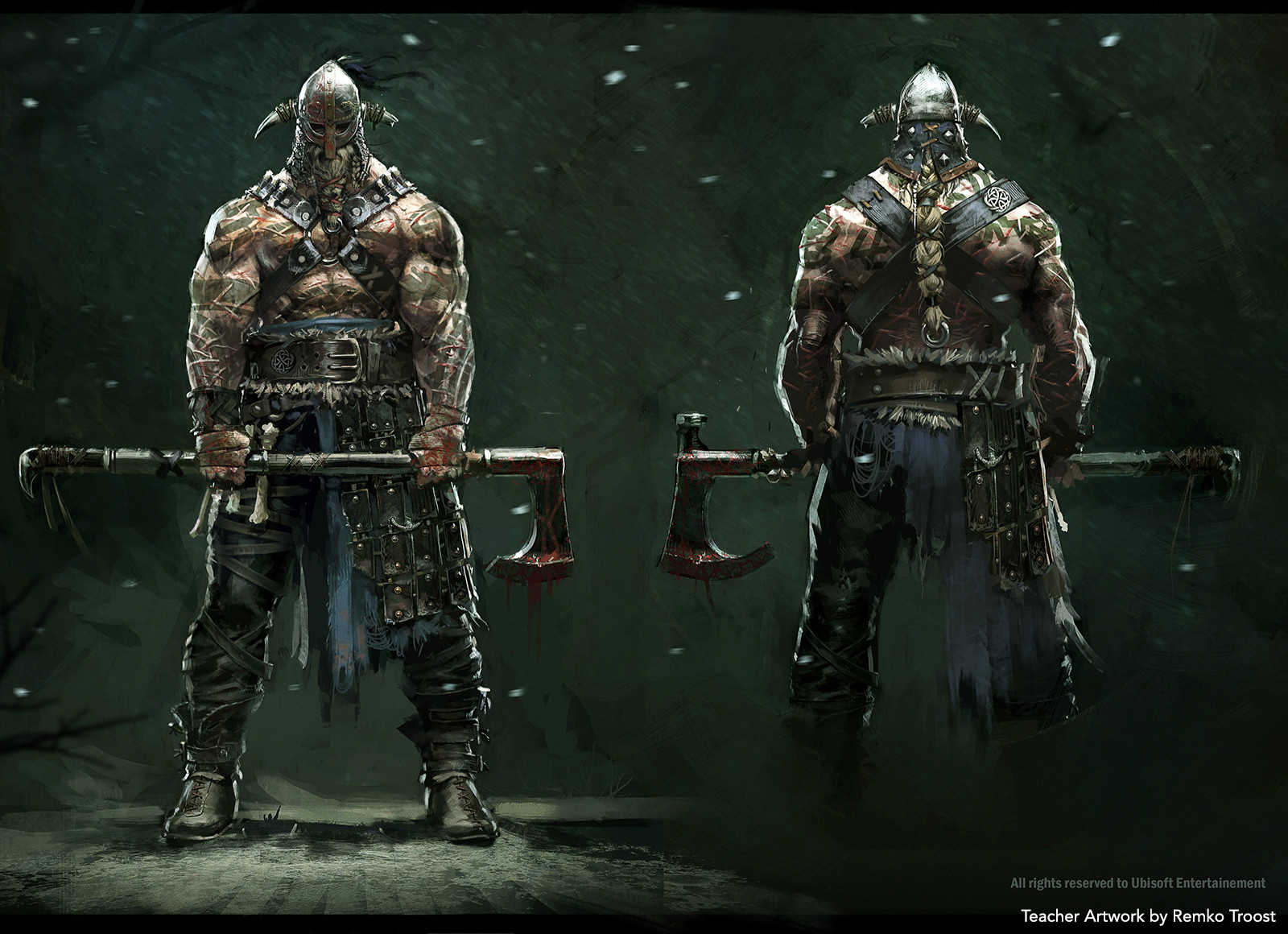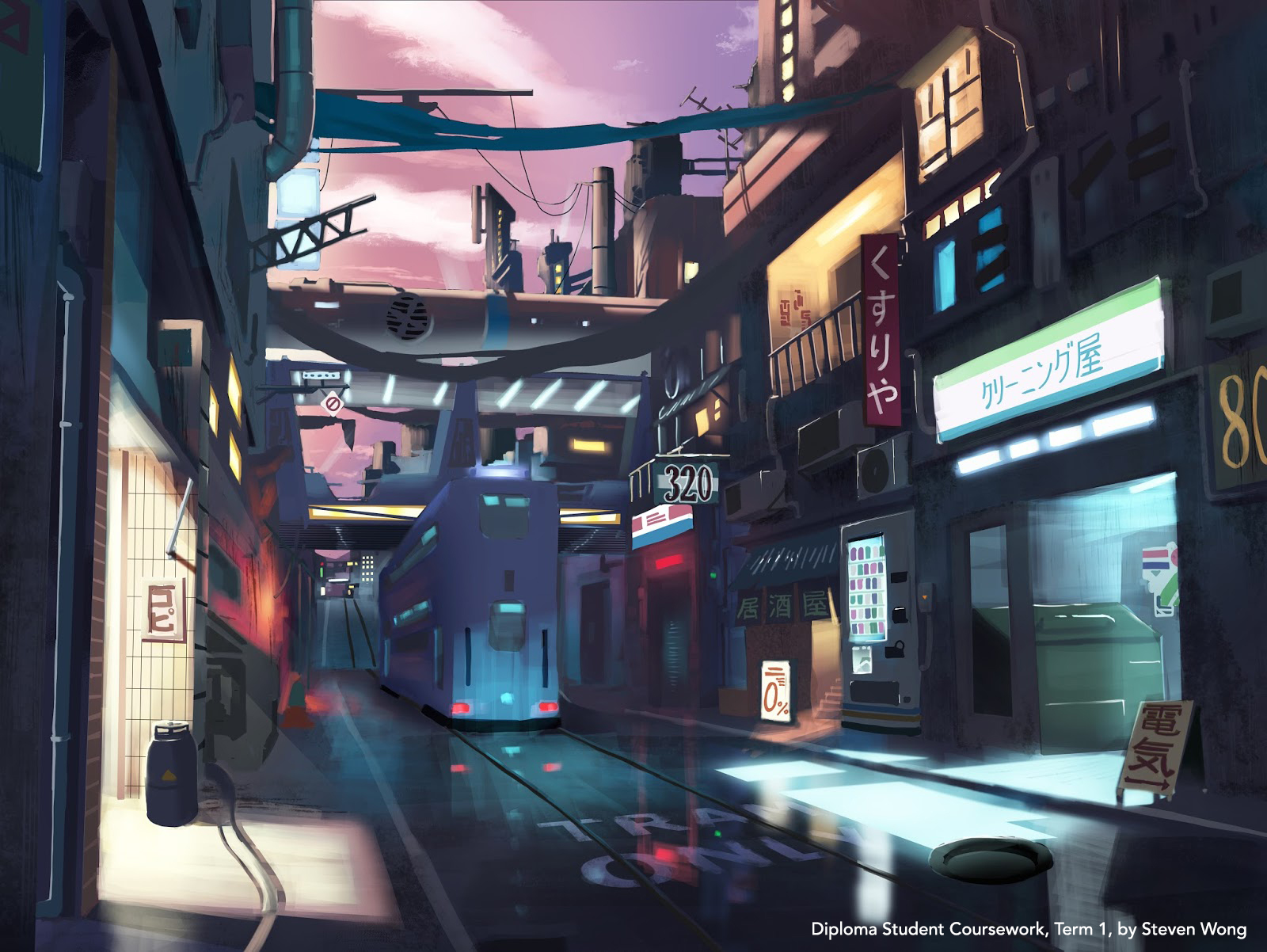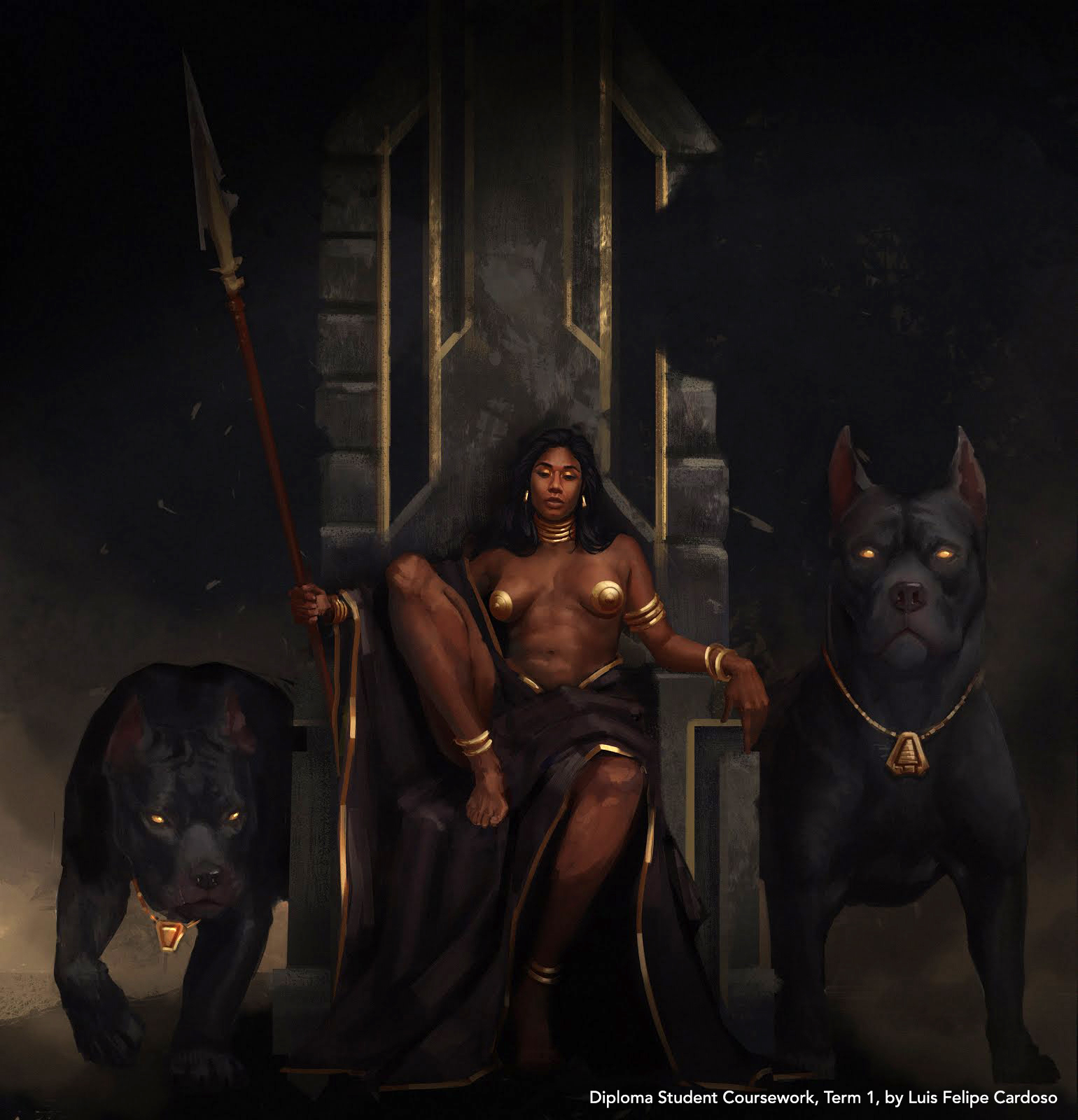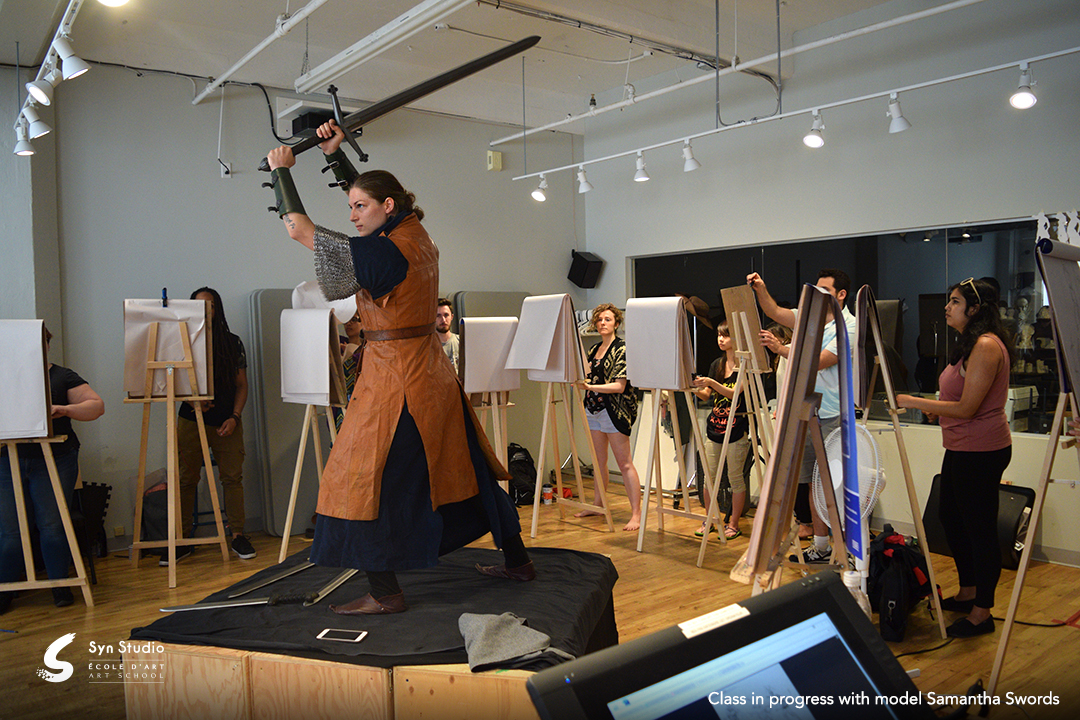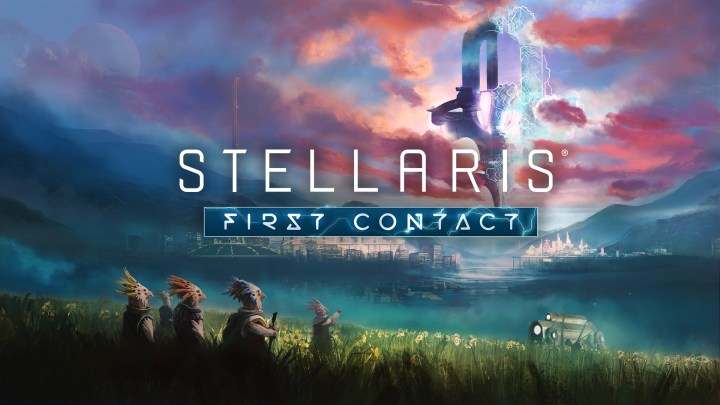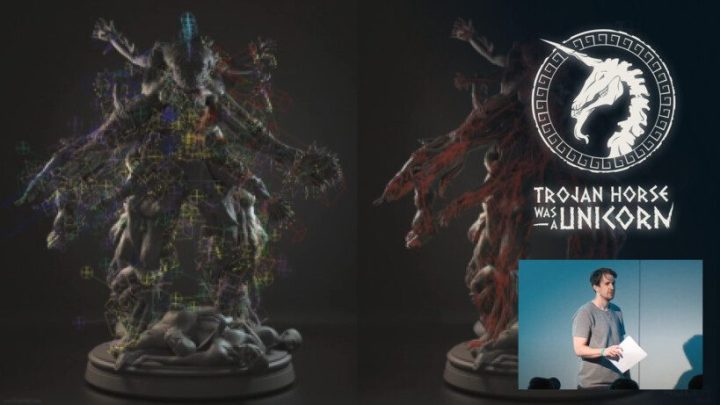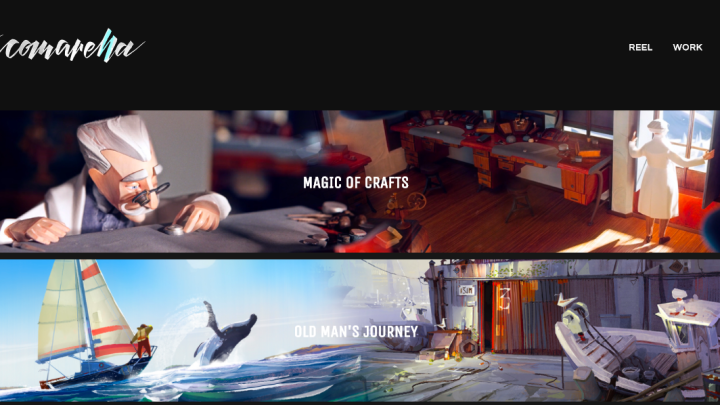What it’s like to be a Student at Syn Studio
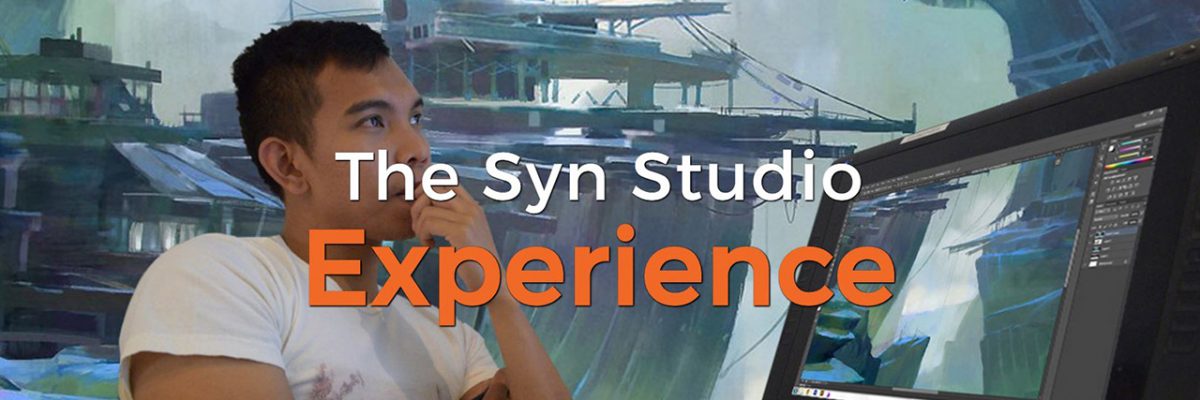
Syn Studio’s Concept Art Diploma program was created to provide aspiring concept artists with the opportunity to master the fundamentals and learn advanced techniques so they can face the challenges of the fast paced concept art industry after a short but intense 18 month training.
The process of creating the program’s course curriculum involved a careful study of similar professional programs, a thorough assessment of the current industry trends and requirements as well as consultations with world’s top educators and concept artists, most notably, Scott Robertson, to ensure it’s always up to date and matching the current industry requirements.
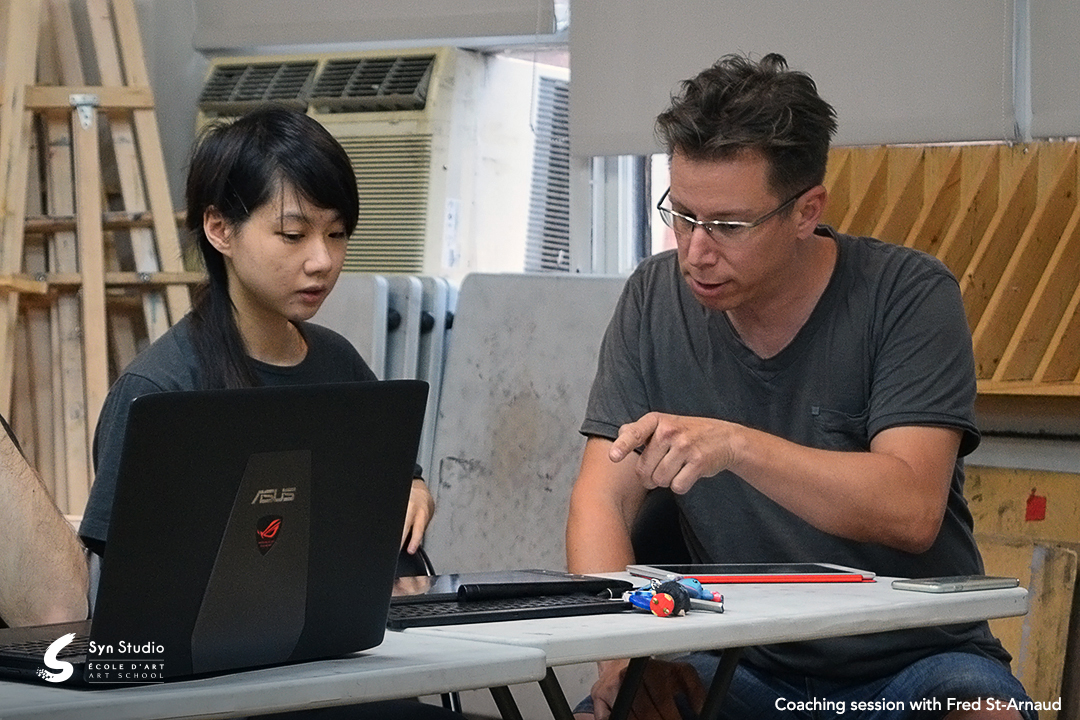 Registrations for the Fall 2018 intake of Syn Studio’s Concept Art Diploma Program are currently underway. Get more information about the program and start your registration process here.
Registrations for the Fall 2018 intake of Syn Studio’s Concept Art Diploma Program are currently underway. Get more information about the program and start your registration process here.
This article features excerpts from interviews with first year students from different parts of the world who share their experiences one and a half months into the program.
Teachers and the Coursework
The teachers in the program are senior concept artists and art directors currently working on some of the most exciting AAA game and film projects being made right now. The presence of such high quality teachers and the opportunity to learn from them in person was an important factor that influenced many students who chose Syn Studio. One among them, Steven, from Hong Kong, commented, “I wanted to build a stronger base in concept art and tried online classes, but was not happy with them. I really wanted to be in a school environment and learn from high quality teachers.”
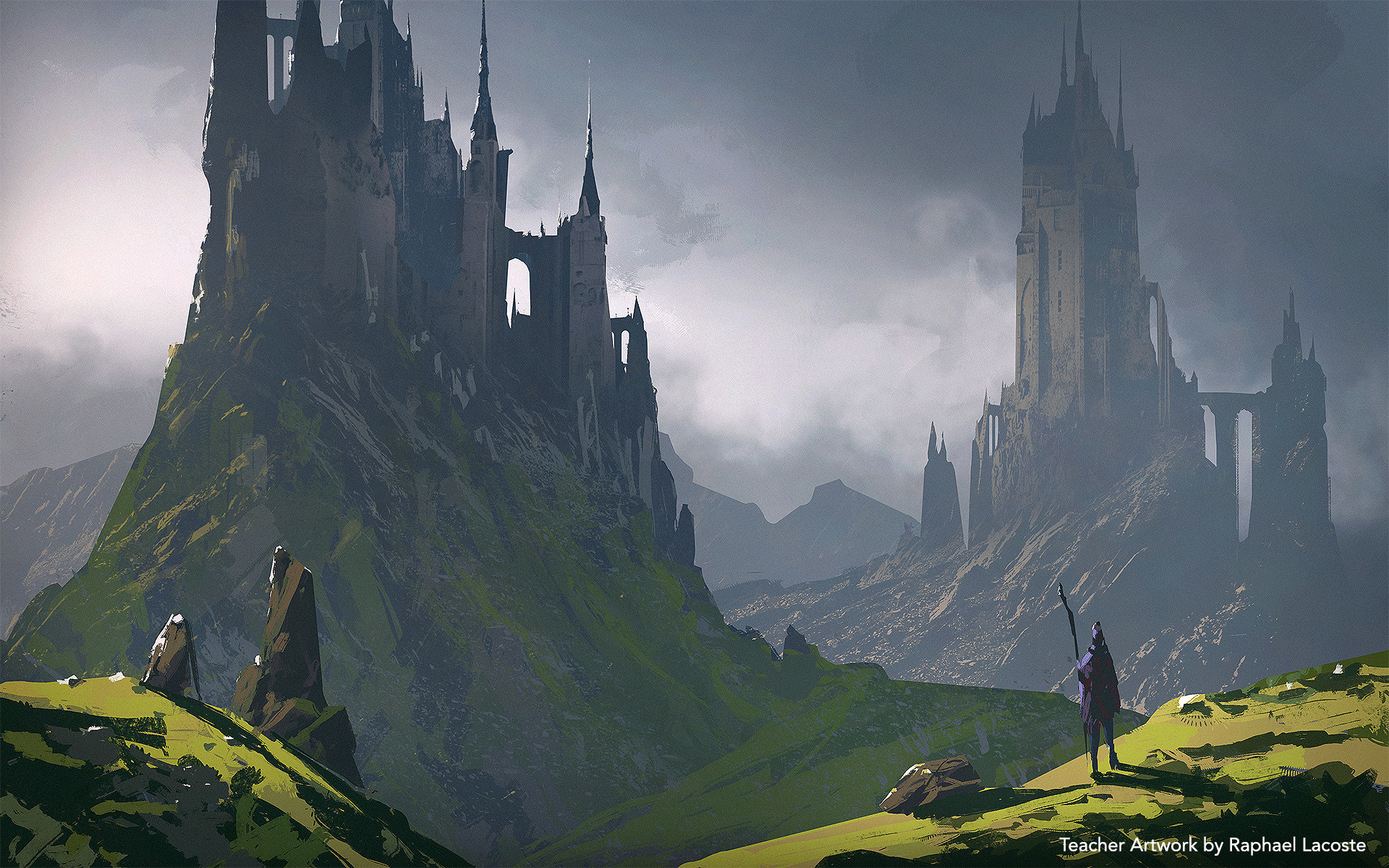

 The courses in the program, with their assignments, projects and other in-class activities are designed to prepare the students for the rigorous demands of the concept art industry.
The courses in the program, with their assignments, projects and other in-class activities are designed to prepare the students for the rigorous demands of the concept art industry.
Talking about the different first term classes, Jin Song, a student from Seoul, South Korea, said, “Thierry Doizon’s “Intro to Concept Art” is my favourite class so far. We learn a lot about the studio environment and the role of concept art in the studio. We get to redesign already famous concepts and work on sci-fi survival game designs as well as VR projects! I also love hearing industry insights from the experienced concept artists who come as guest speakers for this class”.
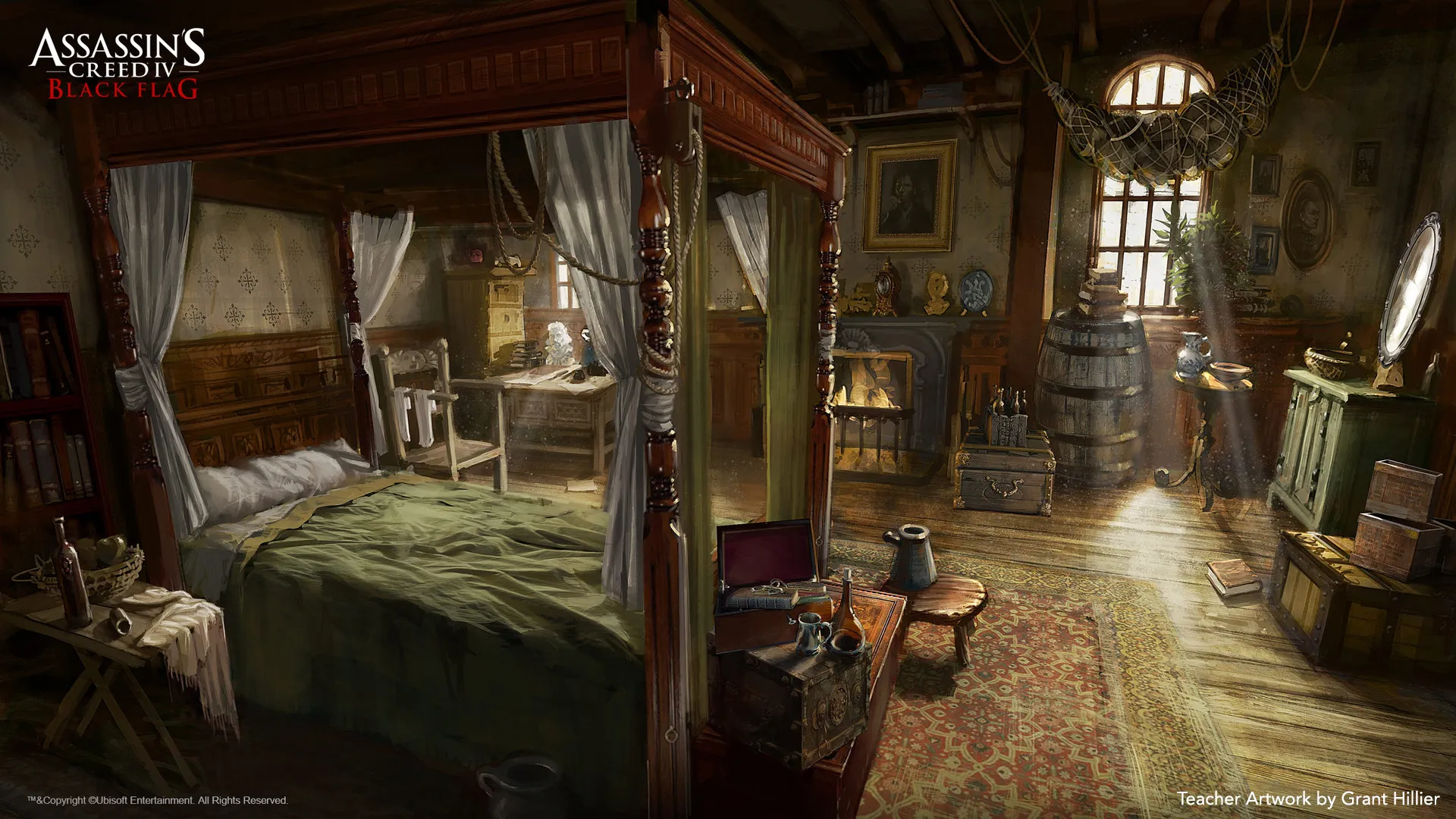
 According to Jarrard from Brisbane, Australia, “Xin Ran Liu’s “How to Render” is very well structured. The explanations are easy to understand. Through his reasoning and his visual examples, he presents a clear process on how to fix your errors”.
According to Jarrard from Brisbane, Australia, “Xin Ran Liu’s “How to Render” is very well structured. The explanations are easy to understand. Through his reasoning and his visual examples, he presents a clear process on how to fix your errors”.
Other first term classes include Daniel Kvasznicza’s “Visual Reference Library” and Christian de Massy’s “Sketching for Production”.
Misael from Ottawa, summed up the overall coursework experience so far as “Each class has something different to offer for those with the interest and this is a great aspect of the program. Learning different things from all these instructors has been extremely useful.”
Improvement in skills
When talking about their improvement since starting the program, Alex from Brisbane, Australia, explained, “Because of Daniel Kvasznicza’s class, I have changed my approach to painting. He constructs in a very systematic and orderly way. He develops toolsets based on his requirements and automates to make life easier. If he wants to make an ambient occlusion pass, he’ll make a brush. He makes functions in Photoshop to create a repeatable process.”
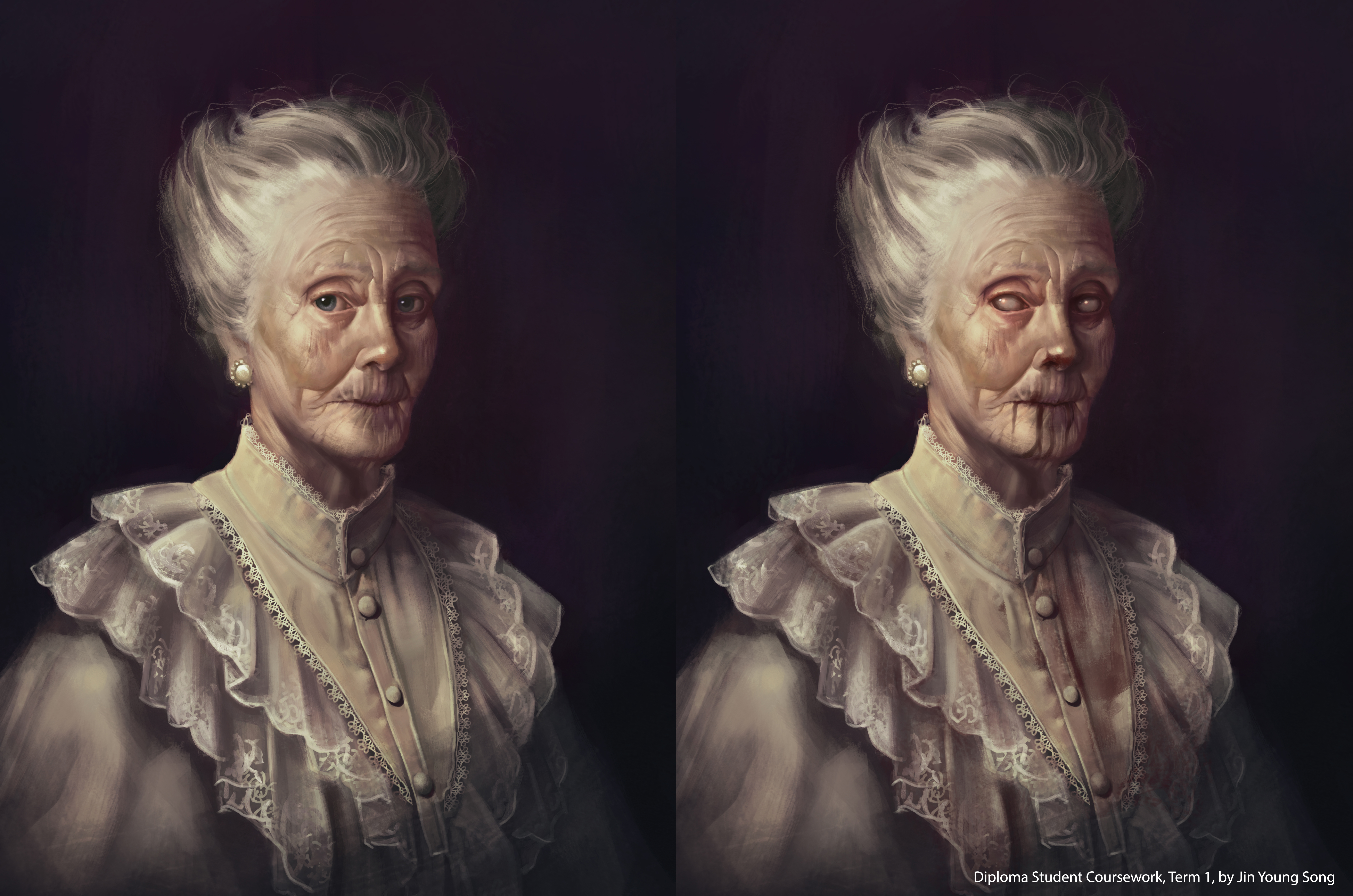
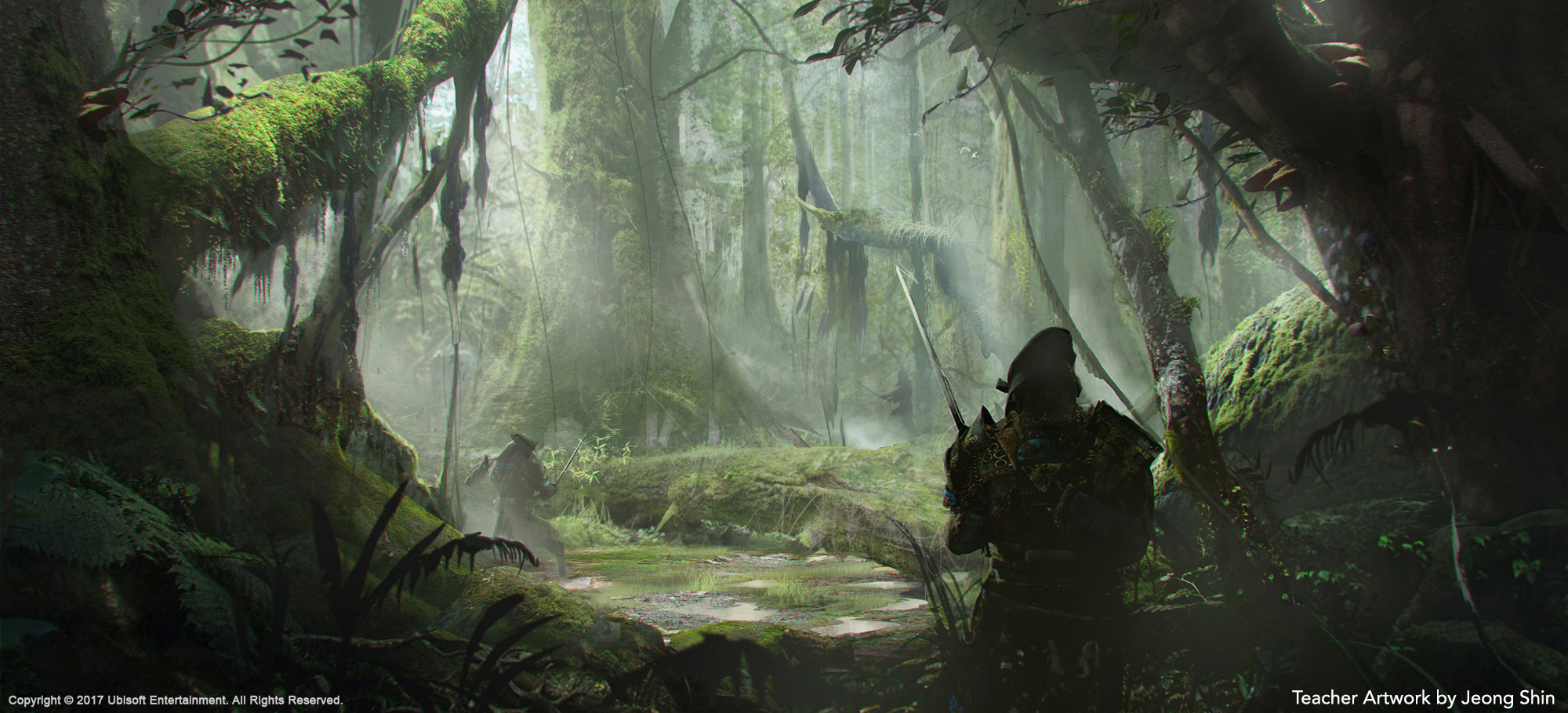
 During the intensive 18 month program, the students strengthen their fundamentals and sharpen their design and illustration skills using Photoshop as well as some 3D programs. In addition to this, they take the role of junior concept artists and learn critical on-the-job-skills while building a top level portfolio under the supervision of their teachers who act as art directors.
During the intensive 18 month program, the students strengthen their fundamentals and sharpen their design and illustration skills using Photoshop as well as some 3D programs. In addition to this, they take the role of junior concept artists and learn critical on-the-job-skills while building a top level portfolio under the supervision of their teachers who act as art directors.
“One of Xin’s rendering assignments taught me how to render skin under red and blue light. Now I stop to reflect on how to paint skin tones. It changed my line of thought. I feel all the assignments are taking me somewhere and they improve my productivity”, added Mariana, a student from Sao Paulo, Brazil. In addition to classwork, the teachers also provide specific feedback to help the students improve as mentioned by Marianna, “I also really like Christian’s feedback on assignments, specifically on where we went wrong and what we should do to improve.”
“Returning to a routine, working out a timeline and having deadlines has helped me improve because it forces me to draw more. Sometimes we can spend a full three hours practicing one thing. We haven’t gone into depth yet, but there definitely has been improvement” observed Jarrad, who echoed the views of all the students interviewed who felt they were improving rapidly. With continuous feedback and coaching, they will further improve as the course progresses and achieve their goal of becoming “industry ready” when the program is over.
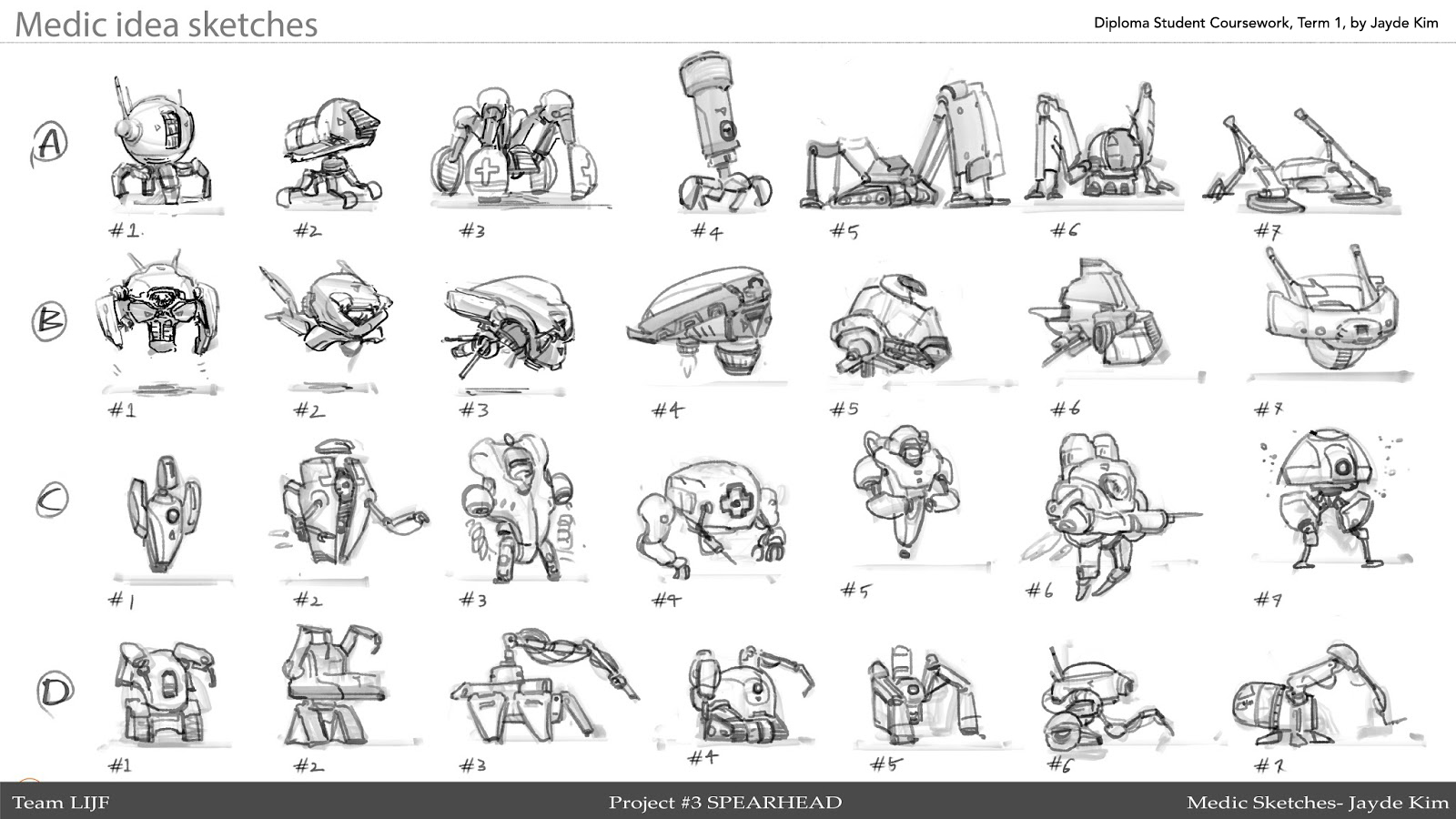


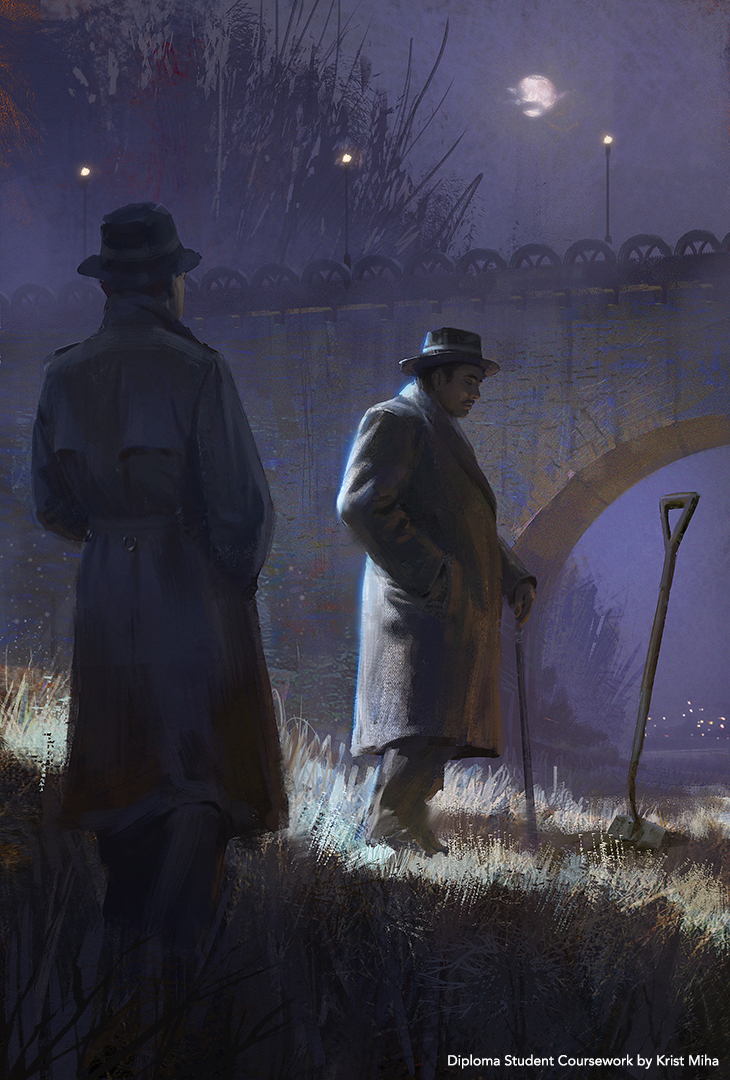
Truly International Program
The current program is composed of 80% international students from various countries around the globe such as Australia, South Korea, Italy, Brazil, Russia and the United States. The diverse and cosmopolitan nature of the program helps the students better understand and appreciate different cultures, a very important quality to possess while dealing with global clients as well as colleagues. Many students like Misael were really looking forward to being in such a diverse program. “Meeting people from so many different countries and cultures is one of the favourite parts of the program for me. Classes have group projects which forces everyone to come out of their shell and interact with one another. As a concept artist, sometimes you have to work with people internationally so getting to know so many different people from all over is important.”
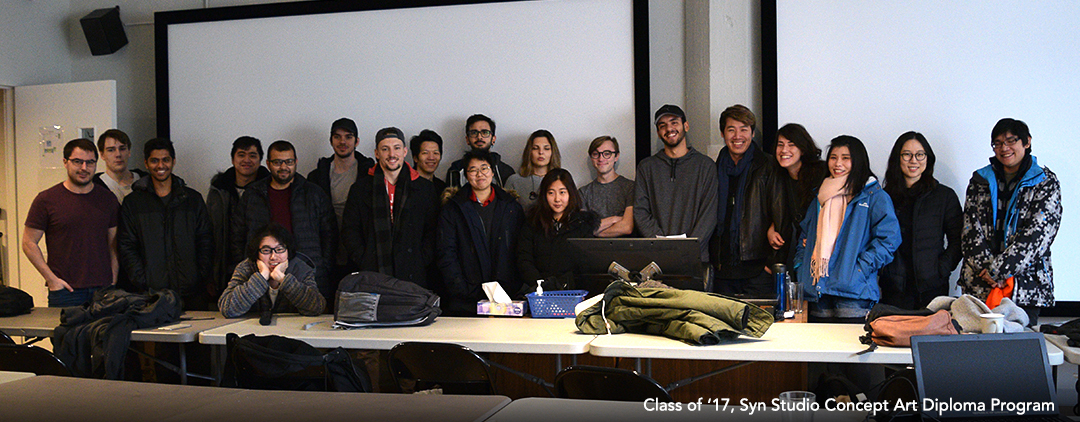 Another important factor in such a multicultural and diverse group is visual references when creating art. The students have already started seeing its impact as pointed out by Mariana, “We get references from other people which influences how we think and our own style. By getting to know everyone’s different references and how it impacts their work, you can learn how to use them to impact our own.” Jason from Kitchener agreed “It’s interesting to hear different backgrounds and how their histories influence their art style, their approach to studying and visual art. Studying visual art with other people helps you improve. The program is very intense but the other students are great, helpful and eager to learn.”
Another important factor in such a multicultural and diverse group is visual references when creating art. The students have already started seeing its impact as pointed out by Mariana, “We get references from other people which influences how we think and our own style. By getting to know everyone’s different references and how it impacts their work, you can learn how to use them to impact our own.” Jason from Kitchener agreed “It’s interesting to hear different backgrounds and how their histories influence their art style, their approach to studying and visual art. Studying visual art with other people helps you improve. The program is very intense but the other students are great, helpful and eager to learn.”
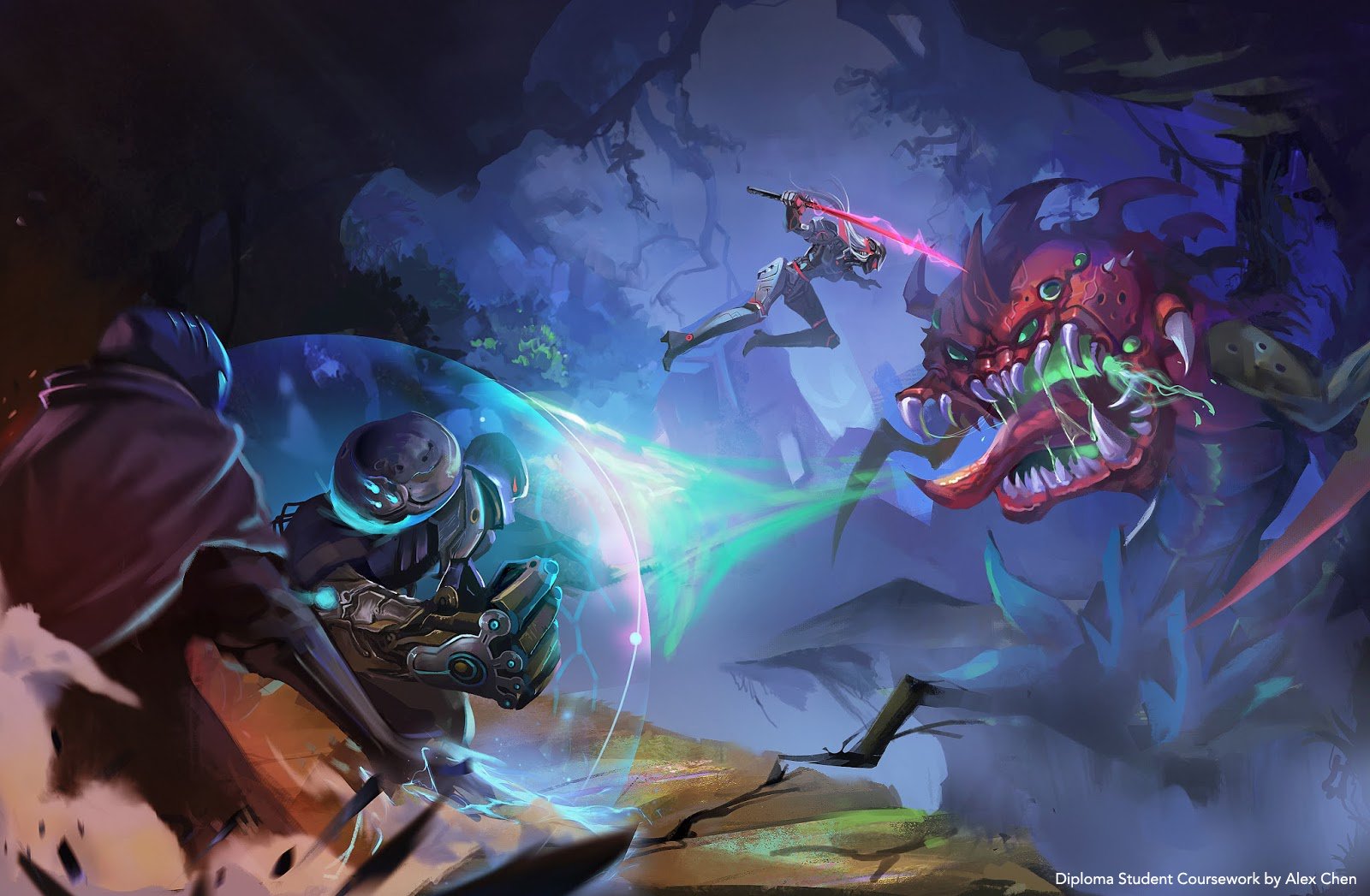
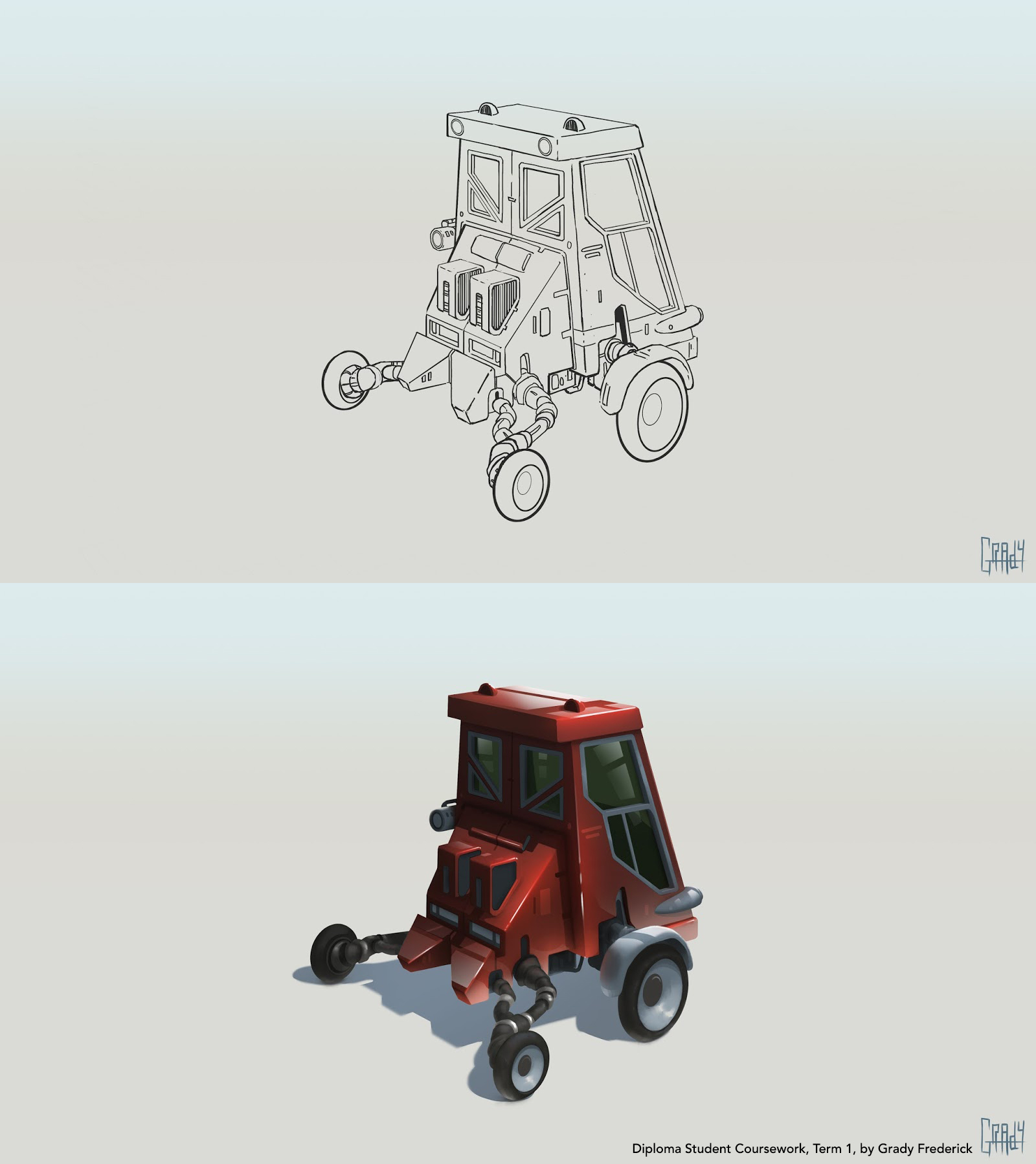 Over the course of 18 months these 20 students, who represent the best of the aspiring concept artist community from their respective countries, share their passions, drawing techniques and work together towards advancing their skills and achieving artistic mastery!
Over the course of 18 months these 20 students, who represent the best of the aspiring concept artist community from their respective countries, share their passions, drawing techniques and work together towards advancing their skills and achieving artistic mastery!
Syn Studio regularly organizes student art shows, themed figure drawing workshops, industry parties and events such as portfolio review sessions, panel talks and masterclasses with world famous concept artists to foster a sense a community among the diverse student body and help them build the important relationships they require to succeed in the future.
Montreal – Attractive, affordable and filled with opportunities
The city of Montreal has been rated as the best student city in the world in 2017 by QS Best Best Student City rankings. It is also one of the most affordable cities in North America and was termed the 2nd best city to live in the world by The Economist in 2015.
Lynn from Singapore was looking to do animation and was introduced to concept art by her teachers. “I wanted to go to another country to gain exposure but the other schools were too expensive. Compared to those, Syn Studio’s program is affordable and reasonable”. Jin Song concurs “When compared to other schools, the Concept Art Diploma Program is shorter as well as more affordable. Moreover, I didn’t want to do another full college program. Montreal is bilingual and I’d heard great things about it.”


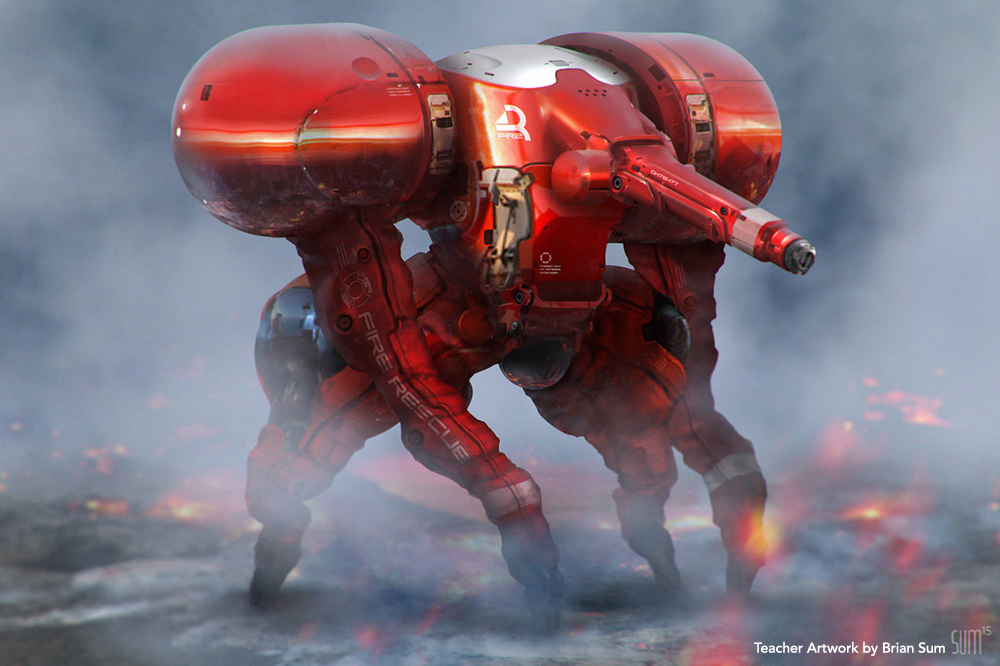 The city is also a world entertainment hub and is home to many top video game, film and animation companies. In addition to this, it is continuously attracting new studios and creating new concept art jobs everyday! After graduation, international students are eligible for a post-graduate work permit so they get jobs as concept artists in Canada.
The city is also a world entertainment hub and is home to many top video game, film and animation companies. In addition to this, it is continuously attracting new studios and creating new concept art jobs everyday! After graduation, international students are eligible for a post-graduate work permit so they get jobs as concept artists in Canada.
How to Register?
Applications are now invited for the General Portfolio Review for the Fall 2018 intake – the deadline is February 7, 2018.
You can reserve your spot today!
Join this artistic community and start the journey of a lifetime!


